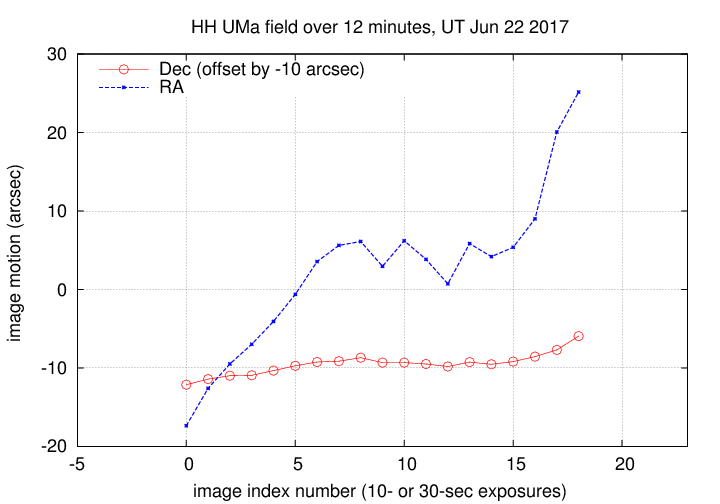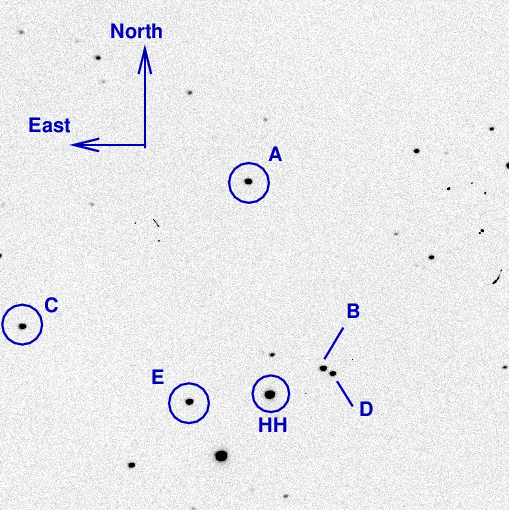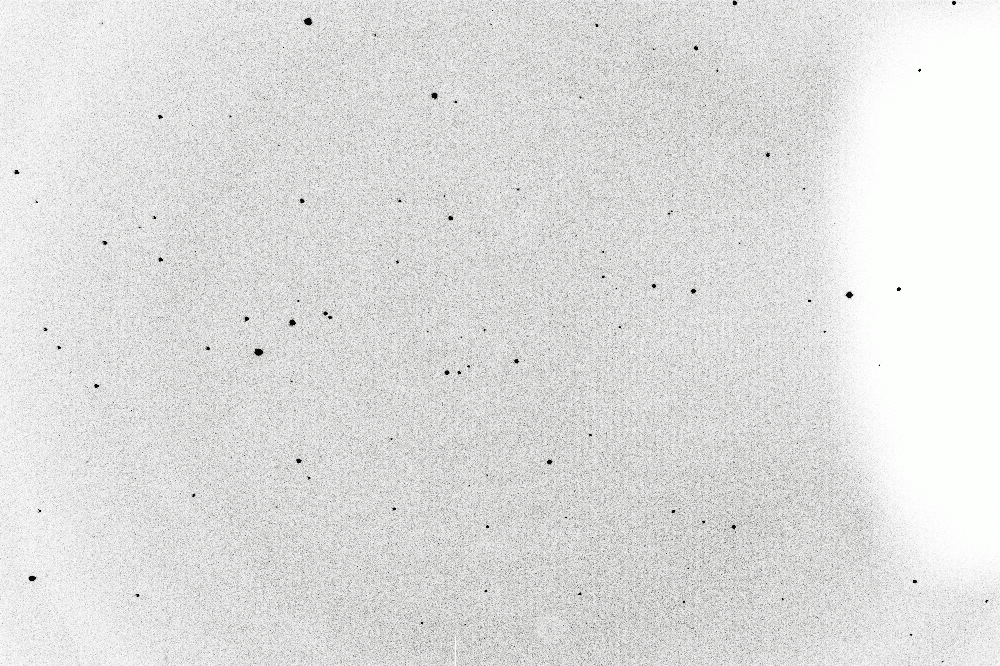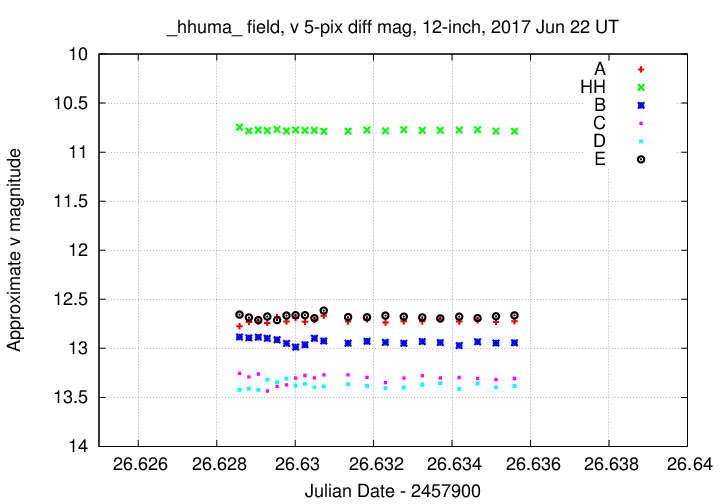
On the night of Jun 21/22, 2017, I used the RIT Observatory telescope and cameras for the first time in almost a year. My real goal was to remember how to run all the equipment, but as a simple test target, I chose the eclipsing contact binary star HH UMa.
The main setup was:
Notes from the night
The main goal for the night was putting all the pieces together, plugging in all the cables, and verifying that the equipment all worked ... and, with one exception, it did. Hooray.
When running MaximDL, I used "ASCOM -> Advanced -> ATIK Camera" for the big ATIK CCD camera. There were no problems taking or downloading images. There is another option for "Advanced -> ATIK Camera 2", which I used briefly later in the night; it seemed to work, too. I set the temperature to -20 Celsius, which the camera reached easily (ambient was +18 C at end of night). There were no signs of ice crystals -- good!
The EFW-2 filterwheel worked properly. I renamed the filters with names that (I believe) correspond to the actual filters:
When I told the telescope to slew to Jupiter, it moved to the proper Dec, but was too far West in RA by about 15-20 degrees. I moved to Jupiter manually, sync'ed the telescope, and it then did move accurately to 54 UMa and HH UMa. I created a new Park Position, pointing to zenith.
At the start of the run, I tried taking pictures of Jupiter with B-band filter. The initial focus position was way out of focus; when I adjusted using the electric focuser, the focus position was at a position of 0.160 inches. That is close to one end of the range of motion, which runs from 0.0 to 1.6 (?) inches. Therefore, I adjusted the silver knobs on the telescope to change the focus coarsely, then re-focused with the electric focuser. I found a new focus position at 0.560 in B, 0.580 in V, which is much closer to the middle of the focuser's range.
A series of dark images shows the same puzzling change in counts vs. exptime that I noted last year; see
Below are histograms showing the distribution of pixel values for dark frames at T = -20 C, for exposure times of 0, 1, 2, 5, 10 and 30 seconds. Note the jump _back_ to smaller counts when the exposure time increases from 2 to 5 seconds.

Is the gain changing at longer exposure times? Perhaps. I can test that idea by taking a series of exposures of a star field at a wide range of exposure times. On this night, I did take 10-second and 30-second exposures of HH UMa, and saw no evidence for change in the gain in those images: the sky value increased by x3, and the star counts increased by x3, just as one would expect.
When I entered information on the guide camera as "Camera 2" for MaximDL, it was able to connect to the camera. When I requested a 5-second image from the guide camera, the program dutifully counted down 5-4-3-2-1-0. But it was unable to read out an image, or transfer the image to the computer. After the countdown finished, an error message including the phrase "No camera" was displayed. The camera command window remained greyed-out until I initiated a new command. I had connected both a telephone jack and a USB cable to the Orion G3 camera, but not any power cable for cooling. The telephone jack and USB cable were tied together, with an attached label "ST9 CCD".
Since I couldn't guide, the telescope simply did its best to track the field. Over the course of about 12 minutes, I took a short series of images of HH UMa. During that time, the stars drifted quite a bit in RA:

The sense of the drift was that stars moved to larger column numbers, which meant "stars moved West", which means that "telescope drifted East".
I should do more tests of the tracking, and perhaps make some fine adjustments to improve the performance in RA.
This object is a nice eclipsing binary star with a continuously varying light curve; a number of papers describing it provide many details, including a period of 0.375494 days = 9.01 hours.
Here's a chart of the field of HH UMa which is at
RA = 11:04:48.1 Dec = +35:36:27 (J2000)
The chart is about 12x12 arcminutes.

Among the labelled stars is
A UCAC4 629-045393 V = 12.721
The new ATIK CCD covers a much larger field than our old ST9. Below is one image from last night, with North up and East to left. HH UMa and the comparison stars are on the left side of the picture; near the right (West) edge is the shadow cast by the pick-off mirror for the guider.

Using aperture photometry with a radius of 5 pixels (radius of 6.6 arcsec), I measured the instrumental magnitudes of a number of reference stars and the target. Following the procedures outlined by Kent Honeycutt's article on inhomogeneous ensemble photometry, I used all stars available in each image to define a reference frame, and measured each star against this frame.
I took pictures for only a few minutes, so there's no science here, but the graph below suggests that we should be able to acquire good data with this new camera. The formal scatter for bright stars was around 0.008 mag.

Last modified 6/22/2017 by MWR.